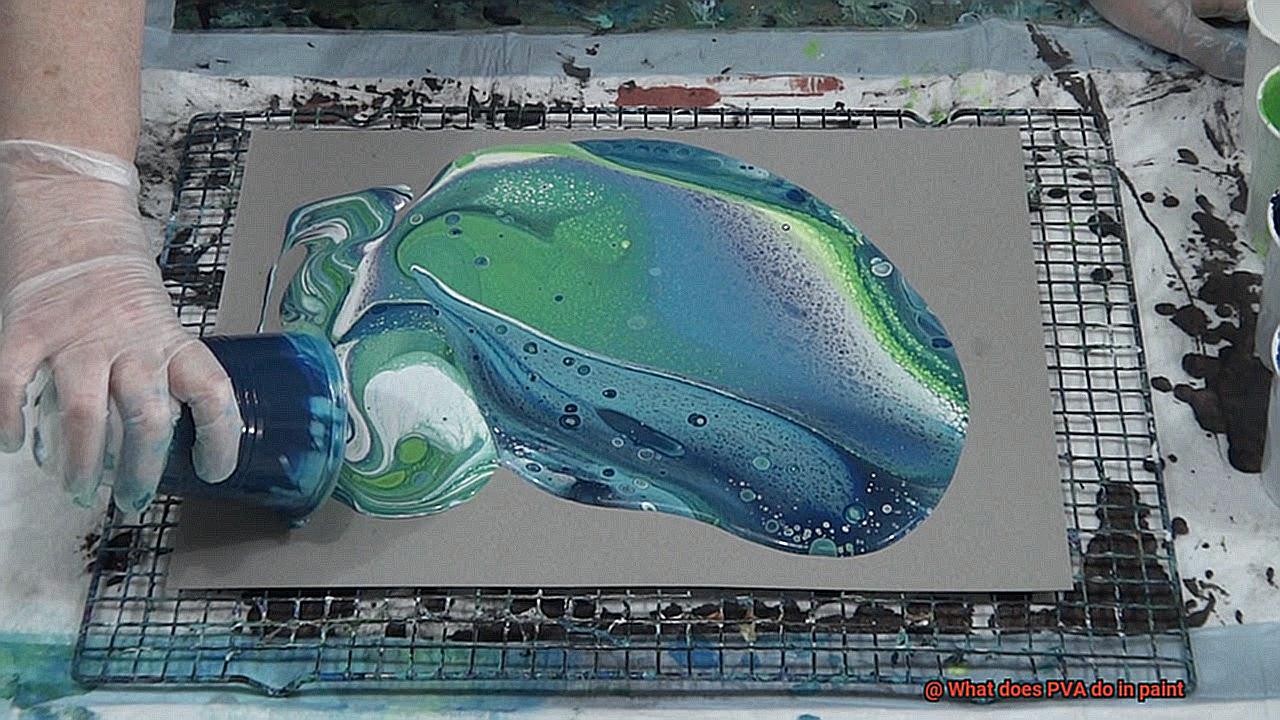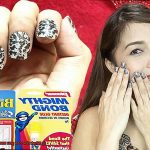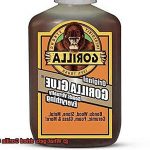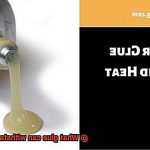Today, we’re putting the spotlight on a rockstar compound known as Polyvinyl Acetate, or simply PVA. You’ve probably stumbled upon this intriguing abbreviation while researching paint, but do you really know what PVA does in paint?
Get ready for a wild ride because we’re about to spill the beans on this multi-talented ingredient. From boosting adhesion to ramping up durability, PVA plays a vital role in the quality and performance of paint.
So whether you’re a DIY fanatic or a seasoned painter, understanding the perks of PVA will undoubtedly elevate your painting game.
What is PVA?
Contents
- 1 What is PVA?
- 2 Advantages of Using PVA in Paint
- 3 How Does PVA Improve Paint Durability and Flexibility?
- 4 How Does PVA Enhance the Flow and Workability of Paint?
- 5 Does PVA Act as a Sealant?
- 6 Where Is PVA Used in Paint Applications?
- 7 Is PVA Suitable for Exterior Use?
- 8 Guidelines for Using PVA in Paint
- 9 Conclusion
PVA, or polyvinyl acetate, is an adhesive that has gained popularity for its versatility and strong bonding properties. Often referred to as white glue or wood glue due to its milky appearance, PVA is widely used in woodworking, paper crafts, and construction.
One of the standout characteristics of PVA is its ability to effectively bond different materials together. Whether you’re joining wood pieces, engaging in paper projects, or working with other porous materials, PVA forms a durable bond as it dries, ensuring a reliable hold.
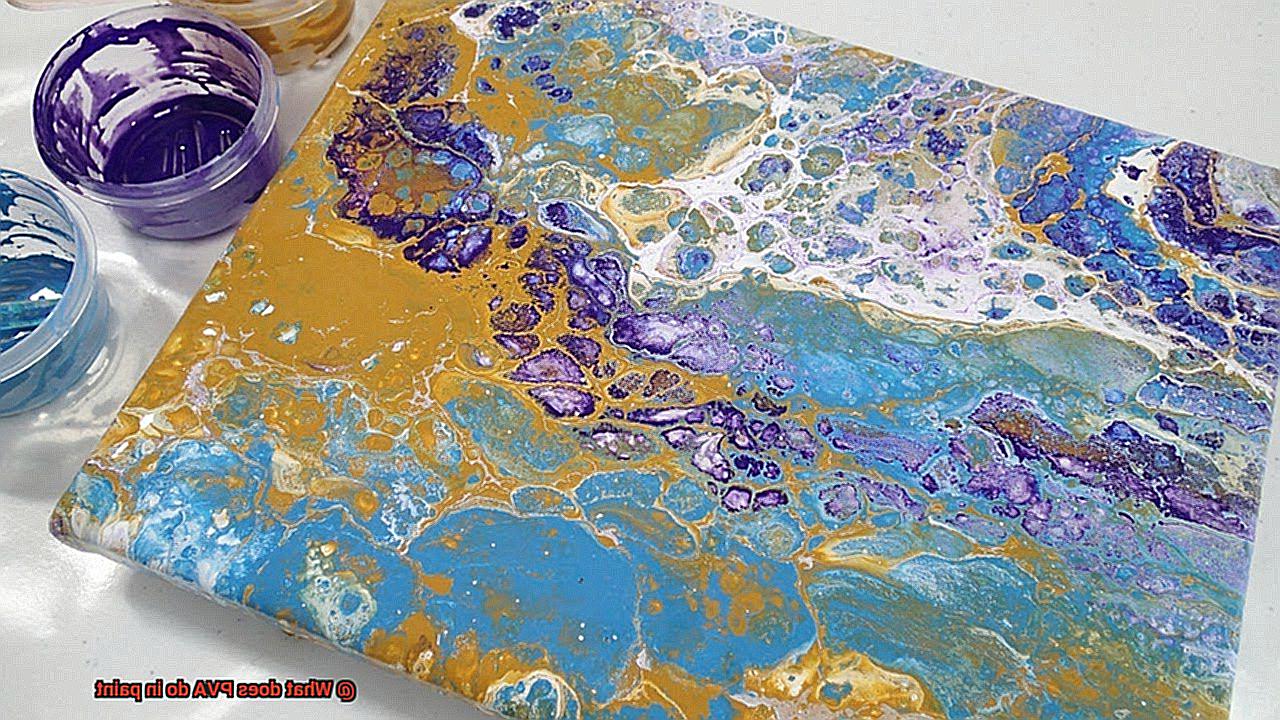
But PVA isn’t just known for its adhesive prowess. It also boasts user-friendly qualities that make it a preferred choice for many. For starters, it is non-toxic and has a low odor, making it safe for both adults and children to use. Additionally, cleanup is a breeze since PVA can be dissolved in water while still wet. This means excess glue can be easily wiped away without leaving behind any unsightly residue.
Beyond its role as an adhesive, PVA plays a vital role in paint formulations. When added to paint, it acts as a binder, enhancing the paint’s adhesion to surfaces. The result? Improved durability and a more even and smooth finish that’s sure to impress.
Moreover, PVA in paint provides flexibility to the dried paint film, preventing unsightly cracking and peeling. This characteristic is especially crucial on surfaces that may experience expansion or contraction due to temperature changes or other environmental factors. By maintaining flexibility, PVA ensures that the painted surface remains intact and attractive over time.
It’s worth noting that there are different types of PVA available on the market, each uniquely tailored for specific purposes. For instance, if you’re working on woodworking projects, specialized PVA adhesives offer a stronger bond compared to regular craft glues. Similarly, there are PVA paints formulated for different surfaces such as wood or fabric, providing optimal adhesion and durability.
Advantages of Using PVA in Paint
PVA, or polyvinyl acetate, is a versatile adhesive that is commonly used in paint formulations. Incorporating PVA into paint has several advantages that improve the overall quality and performance of the paint. Let’s take a closer look at these advantages:
- Improved adhesion: PVA forms a strong bond between the paint and the surface, ensuring that the paint adheres well and does not peel or flake off over time.
- Reduced absorbency: PVA helps to reduce the absorbency of porous surfaces like wood or drywall, allowing for better coverage and a more even finish.
- Enhanced durability: PVA provides a protective barrier that helps to prevent moisture, dirt, and other contaminants from penetrating the paint film, reducing the risk of damage or decay.
- Improved workability: PVA makes the paint more flexible and easier to spread, allowing for smoother application and better control over the final result.
- Compatibility with pigments and additives: PVA is known for its compatibility with various pigments and additives commonly used in paint formulations, ensuring that the paint remains stable and does not undergo any undesirable changes in color or texture.
- Non-toxic and environmentally friendly: PVA is a non-toxic ingredient that does not emit harmful fumes or release volatile organic compounds (VOCs) into the air, making it suitable for use in both indoor and outdoor environments.
- Cost savings: PVA is relatively inexpensive compared to other types of binders or resins used in paints, making it an economical choice for manufacturers without compromising on quality.
How Does PVA Improve Paint Durability and Flexibility?
Paint durability and flexibility are improved through the addition of Polyvinyl Acetate (PVA), a synthetic polymer that enhances the performance of paint. PVA provides several key benefits that contribute to the long-lasting and resilient nature of paint.
Firstly, PVA ensures strong adhesion between the paint and the surface. This is crucial for areas exposed to moisture or temperature fluctuations, as PVA creates a protective barrier against these external factors. By forming a powerful bond, PVA helps the paint stay put and resist peeling or flaking over time.
Moreover, PVA enhances the flexibility of paint films. Paint needs to be able to expand and contract without cracking or breaking, especially when exposed to changing weather conditions. PVA allows the paint to withstand temperature variations, humidity, or movement of the underlying surface while maintaining its integrity and appearance.
Furthermore, PVA increases the strength of the paint film. The polymer chains in PVA reinforce the structure of the paint, making it more resistant to abrasion and wear. This results in a longer lifespan for the painted surface and reduces the need for frequent repainting.
In addition, PVA acts as a hydrophobic agent, providing water resistance to the paint film. It prevents water from penetrating into the paint, which can cause damage such as swelling or deterioration. This makes PVA-enhanced paints ideal for areas with high humidity levels or water exposure.
Another advantage of using PVA in paint is its ability to retain color. PVA helps prevent fading or yellowing of pigments over time, ensuring that the painted surface maintains its vibrant appearance for longer periods.
How Does PVA Enhance the Flow and Workability of Paint?
Polyvinyl Acetate (PVA) is a remarkable additive that can transform the flow and workability of paint. When PVA is introduced into paint, it becomes a binding force, enhancing the adhesion and cohesion of the paint particles. This powerful transformation leads to a seamless and consistent application of paint that will take your artistic endeavors to new heights.
One of the ways in which PVA works its magic is by reducing the viscosity of the paint. Viscosity refers to the thickness or resistance to flow of a liquid. High viscosity can make it challenging to spread paint evenly, resulting in unsightly brush marks, streaks, or uneven coverage. However, with the addition of PVA, the viscosity of the paint is lowered, making it easier to work with and granting better control during application. The brush glides effortlessly across the surface, allowing for smooth and flawless strokes.
PVA also extends the drying time of paint, giving artists a greater window of opportunity to manipulate and blend colors on their canvas. Rapid drying can hinder an artist’s ability to achieve desired effects such as seamless color transitions or textural depth. Yet, with PVA slowing down the drying process, artists have more time to experiment and refine their artistic visions.
Furthermore, PVA prevents premature drying on brushes or palettes, especially when working with fast-drying acrylic paints. Acrylics have a reputation for drying quickly, often leading to frustrating interruptions during the creative process as painters rush to reapply or remix their colors. Adding PVA to the mix keeps the paint moist for longer periods, reducing the need for constant adjustments and ensuring a steady flow of creativity.
In addition to its role in enhancing flow and workability, PVA acts as a binder that holds together the various components of paint. It forms a protective film-like layer that encapsulates pigments and other additives within the paint. This not only enhances the durability and longevity of the painted surface but also intensifies the color vibrancy, resulting in a visually stunning finished work.
Moreover, PVA seamlessly integrates with different painting techniques. Whether you prefer the precision of a brush or the boldness of a palette knife, PVA adapts effortlessly to your artistic style. Its flexibility and control allow for smooth application, ensuring that the paint glides effortlessly onto the surface, bringing your creative vision to life.
Does PVA Act as a Sealant?
PVA, or Polyvinyl acetate, is not only a strong adhesive but also possesses sealant-like characteristics. This makes it a suitable option for various applications, including painting and crafting. When PVA is used in paint, it acts as a sealant by creating a protective barrier on the painted surface. This barrier effectively prevents moisture from penetrating and causing damage over time. PVA’s sealing properties are particularly useful on porous surfaces like wood or concrete. By filling in microscopic gaps and pores, it creates a smooth and sealed surface.
Furthermore, PVA also functions as a shield against stains and dirt, making it easier to clean and maintain the painted surface. Its ability to provide adhesion and cohesion enhances the durability of the paint, resulting in a flawless finish without any streaks or marks.
However, it is essential to note that while PVA can offer some level of sealing, it may not be as durable or long-lasting as dedicated sealants specifically designed for sealing purposes. In areas with high moisture or exposed to harsh weather conditions, it is advisable to use dedicated sealants or primers for optimal sealing results.
In summary, PVA can act as a sealant in certain applications such as painting and crafting. It forms a protective barrier against moisture, fills gaps and pores, and improves the durability of the painted surface. However, for more demanding sealing needs or areas prone to moisture or heavy wear and tear, dedicated sealants or primers should be utilized for superior results.
Where Is PVA Used in Paint Applications?
PVA, also known as polyvinyl acetate, is a dynamic adhesive that finds its place in an array of paint applications. Let’s delve into the diverse uses of PVA in the world of paint:
- Primer Paradise: PVA takes center stage as a primer, creating a smooth and flawless surface for optimal paint adhesion. Its magic touch works wonders on porous surfaces like wood, drywall, and masonry. By sealing the surface and reducing paint absorption, PVA primes pave the way for an enduring and even finish.
- Thickening Triumph: PVA adds viscosity to paint formulations, saving the day as a thickener. With this superhero power, it prevents paint from dripping or running on vertical surfaces. Think walls and ceilings—PVA ensures the paint stays put until it dries. No more unsightly streaks or splotches. The thickening prowess of PVA also combats sagging or pooling of paint, resulting in a polished and professional look.
- Extender Extraordinaire: PVA proves its worth as an extender in paint formulations. It stretches the coverage of paint, allowing it to spread further and cover larger areas with less material. This superpower comes in handy for colossal projects or when minimizing material waste is a priority.
- Durability Dynamo: PVA enhances the durability and flexibility of paint films with its secret formula. When incorporated into paint formulations, it creates a tough yet elastic film that can withstand cleaning, abrasion, and weathering. Say goodbye to wear and tear. This makes PVA-based paints the perfect choice for high-traffic areas or exterior applications where resilience reigns supreme.
It’s important to remember that while PVA is a star in paint applications, it may not be suitable for every type of paint or surface. To avoid any mishaps, always consult the manufacturer’s instructions and recommendations before using PVA-based paints or primers, especially on tricky substrates like metal or plastic.
Is PVA Suitable for Exterior Use?
PVA glue, the superhero of interior paint, falls short when it comes to exterior use. Its water-soluble nature makes it vulnerable to moisture and easily washed away. Imagine the rain, snow, and harsh UV rays relentlessly attacking the PVA in the paint, causing it to crumble and lose its adhesive power.
But that’s not all. PVA is no match for temperature fluctuations either. Exterior surfaces endure a rollercoaster ride of temperatures throughout the year. And sadly, PVA can’t handle the heat or the cold. This leaves your paint at risk of peeling, cracking, and flaking.
But despair not. There are adhesives built for the great outdoors. Acrylics and alkyds come to the rescue with their durability and weather resistance. These heroes ensure that your paint remains steadfastly attached to the exterior surface, no matter what Mother Nature throws its way.
Of course, PVA isn’t completely useless in exterior projects. It can still play a supporting role as an additive in certain exterior paints, improving workability and adhesion on interior surfaces. Just be sure to check the manufacturer’s instructions before diving in.
Guidelines for Using PVA in Paint
Using PVA in paint is a fantastic way to elevate your painting projects to a professional level. By following these guidelines, you can ensure optimal results and achieve a flawless finish.
First and foremost, it is crucial to mix the PVA with water before adding it to the paint. This step is essential because it allows for an even distribution of the glue throughout the paint mixture. Aim for a ratio of 1 part PVA to 5 parts water as a starting point, but feel free to adjust this based on your personal preferences and project requirements.
Once you have mixed the PVA with water, thoroughly stir the mixture to ensure it is well combined. This step is vital to prevent any clumps or uneven distribution of the glue in the paint. By taking the time to stir thoroughly, you can achieve a smooth consistency that will enhance the overall quality of your painted surfaces.
It’s important to note that PVA should not be used as a substitute for other binders or additives in paint. Instead, it works best when used in combination with other ingredients such as acrylic mediums or latex binders. This combination creates a synergistic effect that enhances adhesion and durability.
When applying paint with PVA, it is recommended to use multiple thin coats rather than one thick coat. This technique allows for better adhesion and reduces the risk of cracking or peeling. By layering the paint in this way, you can achieve a more consistent and durable finish.
After each coat of paint, allow ample time for it to dry thoroughly before applying the next one. This patience is crucial as it ensures proper bonding between each layer and prevents any issues with the final finish. Rushing this step could compromise the integrity of your work.
Once you have applied the final coat of paint with PVA, let it cure for at least 24 hours before subjecting it to moisture or heavy use. This curing time allows the glue to fully dry and bond with the paint, resulting in a stronger and more durable finish. By giving it this time to set, you can ensure that your hard work will stand the test of time.
Lastly, remember to clean your brushes and tools immediately after use. PVA can dry quickly and become challenging to remove once it hardens. Using warm soapy water or a dedicated brush cleaner will help keep your tools in top condition and prevent any damage.
Bnq00TC97tI” >
Conclusion
To wrap it up, PVA, also known as polyvinyl acetate, is a true game-changer in the world of paint. It’s like the glue that holds everything together, both literally and figuratively. With its adhesive powers and binding abilities, PVA takes paint adhesion to new heights, ensuring your masterpiece stays put on any surface.
But that’s not all. PVA brings flexibility to the table too. No more worries about cracked or peeling paint over time. Thanks to PVA, your paint film will stay smooth and intact for years to come.
What really sets PVA apart is its knack for bonding different materials flawlessly. It’s like a matchmaker for surfaces, creating unbreakable connections as it dries. And let’s not forget its user-friendly nature – non-toxic and low odor – making cleanup a breeze with just a splash of water.
When you mix PVA into your paint concoction, magic happens. Adhesion improves, absorbency on porous surfaces decreases, durability skyrockets, and workability becomes a dream come true. Plus, it plays well with other ingredients commonly found in paints, ensuring stability and preventing any unwanted surprises in color or texture.
While PVA can do wonders as a sealant in certain situations like crafting or painting projects, remember that heavy-duty sealing calls for specialized products designed to handle moisture or heavy wear.
PVA has many tricks up its sleeve when it comes to paint applications. Use it as a primer to prepare surfaces or thicken your paint so it doesn’t drip down those vertical masterpieces. You’ll be amazed at how far you can spread your paint with less material thanks to the magic of PVA. And if you need extra durability for high-traffic areas or outdoor projects, PVA has got your back.
To make the most of this superstar ingredient, follow some simple guidelines: mix PVA with water before adding it to your paint mix, stir it well for even distribution, opt for multiple thin coats instead of one thick layer, and give each coat enough time to dry before subjecting it to moisture or heavy use. And don’t forget to clean your brushes and tools immediately after use – PVA loves a tidy workspace.
In a nutshell, PVA is the secret weapon that will take your painting skills to new heights.

